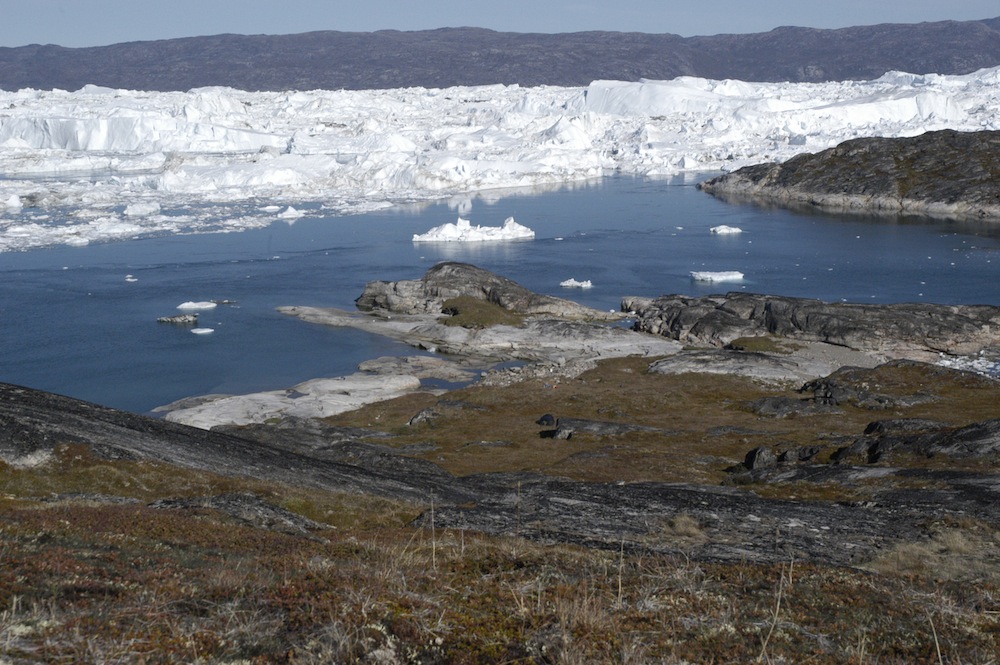No Descendants Are Left from the First Eskimos

Ancient human DNA is shedding light on the peopling of the Arctic region of the Americas, revealing that the first people there did not leave any genetic descendants in the New World, unlike previously thought.
In the largest study yet of ancient human DNA, the researchers suggest the first group of people in the New World Arctic may have lived in near-isolation for more than 4,000 years because of a mindset that eschewed adopting new ideas. It remains a mystery why they ultimately died off, they added.
The first people in the Arctic of the Americas may have arrived about 6,000 years ago, crossing the Bering Strait from Siberia. The area was the last region of the New World that humans populated due to its harsh and frigid nature.
But the details of how the New World Arctic was peopled remain a mystery because the region's vast size and remoteness make it difficult to conduct research there. For example, it was unclear whether the Inuit people living there today and the cultures that preceded them were genetically the same people, or independent groups.
The scientists analyzed DNA from bone, teeth and hair samples collected from the remains of 169 ancient humans from Arctic Siberia, Alaska, Canada and Greenland. They also sequenced the complete genomes of seven modern-day people from the region for comparison.
Previous research suggested people in the New World Arctic could be divided into two distinct groups — the Paleo-Eskimos, who showed up first, and the Neo-Eskimos, who got there nearly 4,000 years later. [In Photos: Life in the Arctic region of the Americas]
The early Paleo-Eskimo people include the Pre-Dorset and Saqqaq cultures, who mostly hunted reindeer and musk ox. When a particularly cold period began about 800 B.C., the Late Paleo-Eskimo people known as the Dorset culture emerged. The Dorset people had a more marine lifestyle, involving whaling and seal hunting. Their culture is divided into three phases, altogether lasting about 2,100 years.
Get the world’s most fascinating discoveries delivered straight to your inbox.
"One may almost say kind of jokingly or informally that the Dorsets were the hobbits of the Eastern Arctic, a very strange and very conservative people that we are just now getting to know a little bit," said study co-author William Fitzhugh, an anthropologist at the Smithsonian Institution's National Museum of Natural History in Washington, D.C.
The Dorset culture ended sometime between 1150 and 1350 A.D., getting rapidly replaced after the sudden appearance of Neo-Eskimo whale-hunters known as the Thule culture. These newcomers from the Bering Strait region brought new technology from Asia, including complex weapons such as sinew-backed bows and more effective means of transportation such as dog sleds. The Thule "pioneered the hunting of large whales for the first time ever in, I guess, maybe anywhere in the world," Fitzhugh said.
Modern Inuit cultures emerged from the Thule during the decline of whaling near the end of the period known as the Little Ice Age, which lasted from the 16th to 19th century. This ultimately led the Inuit to adopt the hunting of walruses at the edges of ice packs and the hunting of seals at their breathing holes.
Previous studies hinted that some modern Native Americans, such as the Athabascans in northwestern North America, might be descended from the Paleo-Eskimos. However, these findings now quash that idea. "The results of this paper have a bearing not just on the peopling of the Arctic, but also the peopling of the Americas," lead study author Maanasa Raghavan, a molecular biologist at the University of Copenhagen's National Museum of Natural History in Denmark, told Live Science.
The new findings suggest the Paleo-Eskimos apparently survived in near-isolation for more than 4,000 years. The arrival of Paleo-Eskimos into the Americas was its own independent migration event, with Paleo-Eskimos genetically distinct from both the Neo-Eskimos and modern Native Americans.
"I was actually surprised that we don't find any evidence of mixture between Native Americans and Paleo-Eskimos,"
said study co-author Eske Willerslev, an evolutionary geneticist also at the University of Copenhagen's National Museum of Natural History. "In other studies, when we see people meeting each other, they might be fighting each other, but normally they actually also have sex with each other, but that doesn't seem to really have been the case here. They must have been coexisting for thousands of years, so at least from a genetic point of view, the lack of mixture between those two groups was a bit surprising."
The reason the Paleo-Eskimos may not have mixed with the Neo-Eskimos or the ancestors of modern Native Americans was "because they had such an entirely different mindset," Fitzhugh said. "Their religions were completely different, their resources and their technologies were different. When you have people who are so close to nature as the Paleo-Eskimos had to be to survive, they had to be extremely careful about maintaining good relationships with the animals, and that meant not polluting the relationship by introducing new ideas, new rituals, new materials and so forth."
The researchers did find evidence of gene flow between Paleo-Eskimos and Neo-Eskimos. However, this likely occurred before the groups migrated to the New World, back in Siberia, among the common ancestors of both lineages. The new evidence suggests that in the American Arctic, the two groups largely stayed separate.
In addition, while differences in the artifacts and architecture of the Pre-Dorset and Dorset had led previous studies to suggest they had different ancestral populations, these new findings suggest the Early and Late Paleo-Eskimos did share a common ancestral group. "The pre-Dorset people, the Dorset ancestors, seemed to have morphed into Dorset culture," Fitzhugh told Live Science.
One mystery these findings help solve is the origin of the Sadlermiut people, who survived until the beginning of the 20th century in the region near Canada's Hudson Bay, until the last of them perished from a disease introduced by whalers. The Sadlermiut avoided interaction with everyone outside their own society, and according to their Inuit neighbors, the Sadlermiut spoke a strange dialect, were bad at skills the Inuit considered vital, such as constructing igloos and tending oil lamps, were unclean, and did not observe standard Inuit taboos, all of which suggested that the Sadlermiut were descended from Paleo-Eskimos instead of Neo-Eskimos.
However, these new findings revealed the Sadlermiut showed evidence of only Inuit ancestry. Their cultural differences from other Inuit may have been the result of their isolation.
It remains a mystery why the Dorset people ultimately died off. Previous studies suggested the Dorset were absorbed by the expanding Thule population — and the Thule did adopt Dorset harpoon types, soapstone lamps and pots, and snow houses. However, these new findings do not find evidence of interbreeding between the groups.
One possibility is that the rise of the Thule represented "an example of prehistoric genocide," Fitzhugh said. "The lack of significant genetic mixing might make it appear so." However, Thule legends of the Dorset "tell only of friendly relations with a race of gentle giants," Fitzhugh added.
Another possibility is that diseases introduced by Vikings or the Thule may have triggered the collapse of the Dorset, Fitzhugh said. However, "if it's disease, then you'd expect to find dead bodies of Dorset people in their houses, and that's never been found," Fitzhugh said. [Fierce Fighters: 7 Secrets of Viking Seamen]
To help solve this and other remaining mysteries about the peopling of the New World Arctic, the researchers plan to look at more ancient human remains in both the Americas and Asia. The scientists detailed their findings in the Aug. 29 issue of the journal Science.
Follow Live Science @livescience, Facebook & Google+. Originally published on Live Science.

Charles Q. Choi is a contributing writer for Live Science and Space.com. He covers all things human origins and astronomy as well as physics, animals and general science topics. Charles has a master of arts degree from the University of Missouri-Columbia, School of Journalism and a bachelor of arts degree from the University of South Florida. Charles has visited every continent on Earth, drinking rancid yak butter tea in Lhasa, snorkeling with sea lions in the Galapagos and even climbing an iceberg in Antarctica.
